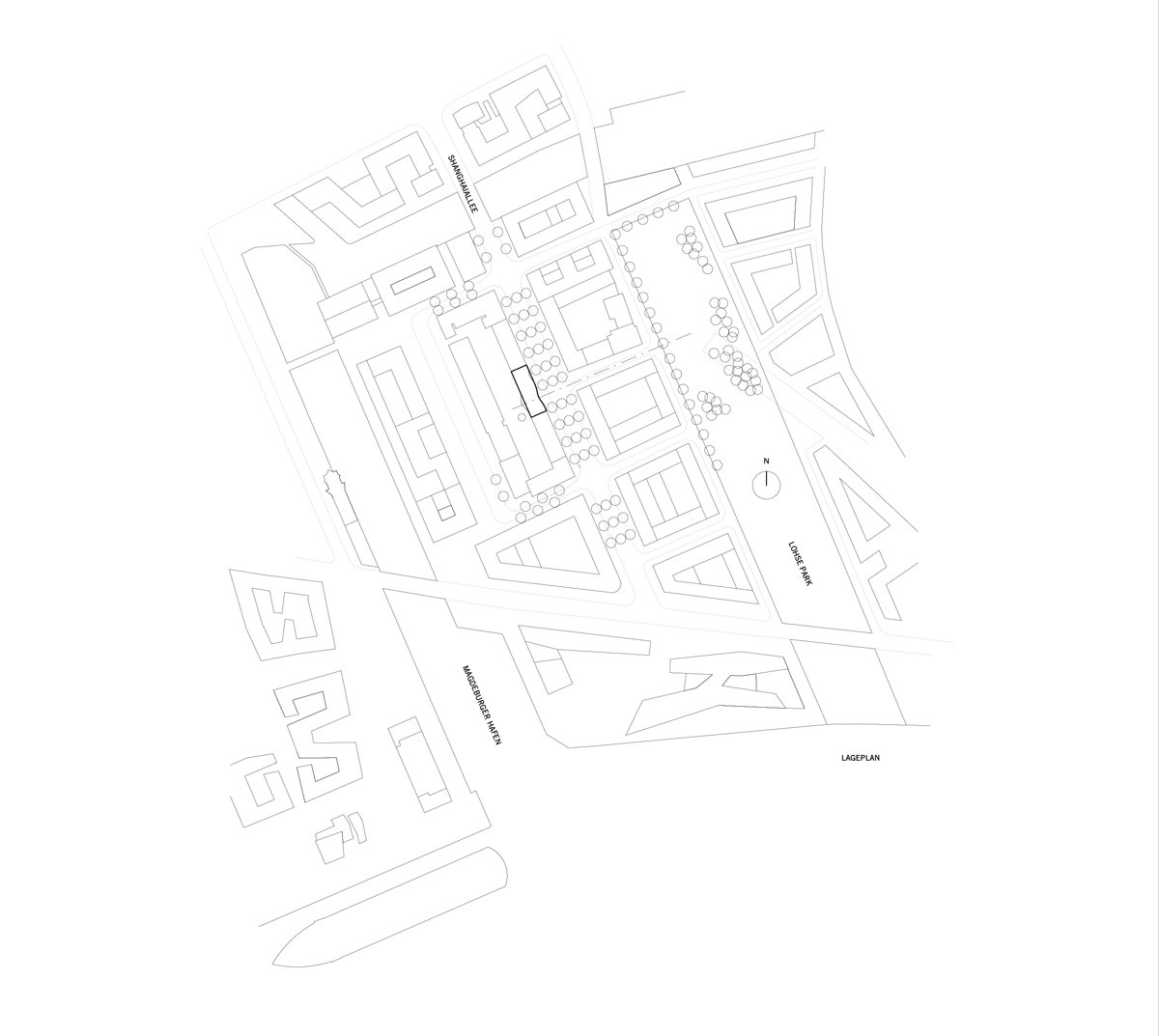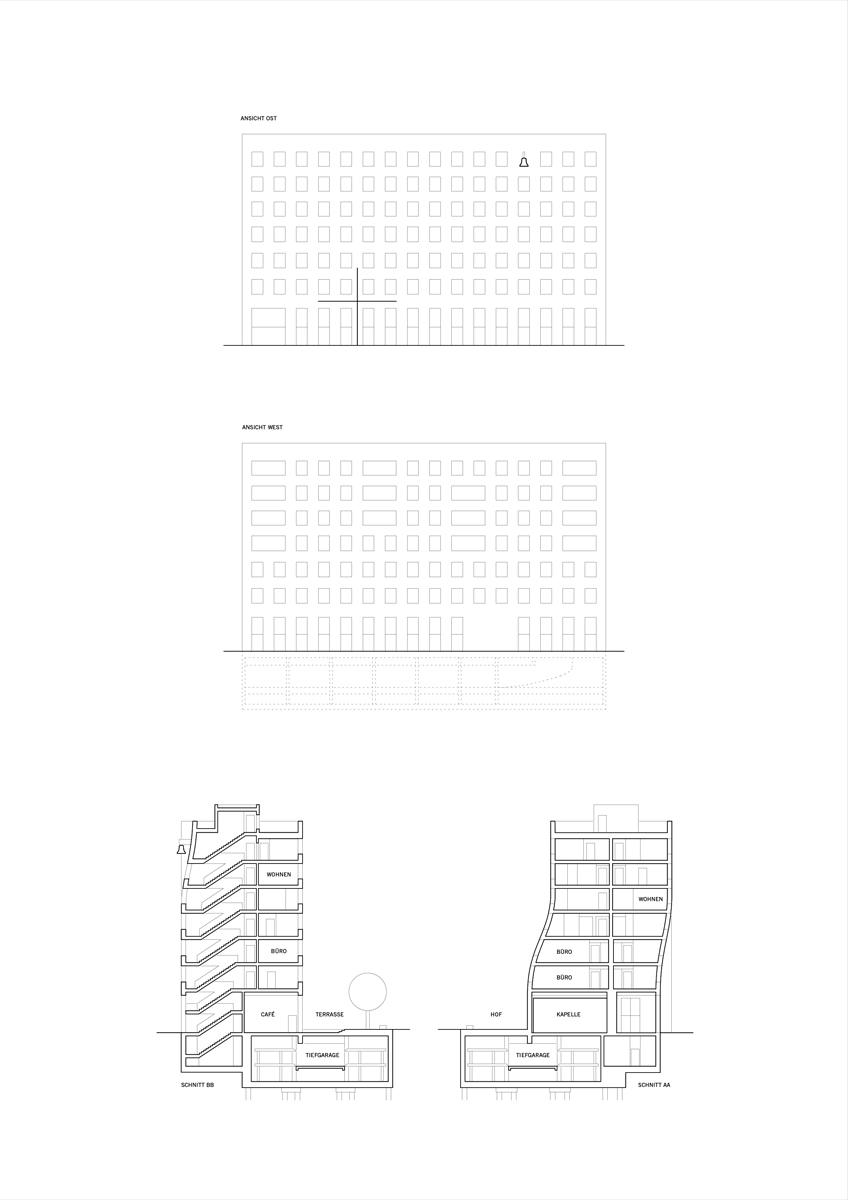Ökumenisches Forum Hafencity / Wandel Lorch Architekten
Ökumenisches Forum Hafencity / Wandel Lorch Architekten
Description
The Ecumenical Forum is a sacred and a residential and office building. The only chapel in the HafenCity had been created from the association of 19 Christian denominations. The Forum combines two different building typologies: The town house with its perimeter block development incorporated in the urban context and the sacred building with sculptural embossment setting urban accents.
The building's three sculptural embossments highlight the religious key aspects of chapel and City convent displayed in the facade as concave shapes with the typical attributes of Christian churches: cross and bell. The concave form of the chapel's apsis is facing towards the courtyard. The entrance to the chapel is located at the intersection of Shanghaiallee and Steinschanze.
The public facilities on the ground floor (chapel, cafe, info centre and function room) are linked with each other and can be flexibly used. The offices on the 1st and 2nd floor are designed as fIexibly separable combi-offices with 15 m depth as steel skeleton structure. The upper residential floors and the office floors are either lettable church-related or freely. Common rooms and links of both staircases encourage Christian living. The 6th fIoor houses the City convent and guest area. The roof terrace can be reached barrier-free and is available to residents and for events.
In the tradition of Hamburg architects such as Fritz Höger's Chile House a contemporary expressive large scale shape has been achieved with the offset of red clinker bricks according to the concept of a "red” Hamburg. The embossed facade creates a changing play of shadows. Clinker bricks with embossed individual themes and symbols are used in the chapel.
The Ecumenical Forum has received the HafenCity environmental pre-certificate in Gold for excellent energy efficiency using geothermal and solar energy.
The Ecumenical Forum is built as ferroconcrete frame construction. The façade is made of 250mm ferroconcrete, 140mm mineral cotton insulation (thermal insulation value 035), a 45mm air layer and a 115mm brick curtain wall. The bricks measuring 297x115x71mm are supported by L-shaped steel angles and cavity wall ties fixed back to the construction. The air layer helps to absorb tolerances of the building process. Every brick has a different Z-Axis, the smooth fade is scripted with McNeel Rhinos addon Grasshopper. The bricks don’t rotate but stay parallel to the main façade presenting a flaked, rough pattern.
The cross is integrated in the masonry bond with special sized green glazed bricks. The bell is hold by two I-beams fixed by a head plate to the concrete. The bricks are decoupled from the steel beams because of the vibration of the swinging 700kg g-tone bell. The round and perforated brick layer in the chapel is hold by a hidden steel construction. 41 vertical T-beams in distance of 550mm are fixed at the lower end on the concrete floor. The upper end is hold circular beam attached at 6 points at the concrete walls. Two hidden doors in the brick wall are lined with light wood bricks in the same size as the ceramic bricks. Every Christian denomination had embossed the bricks building the wall with their typical inscription.

























